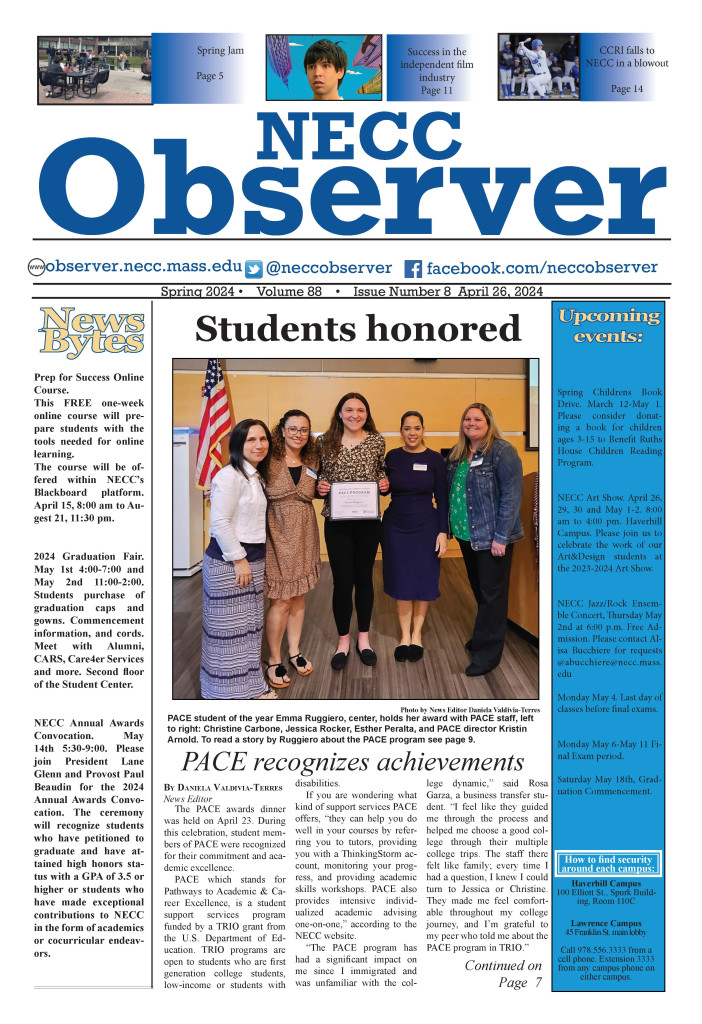Current student, Kali Bergeron, 20, of Salem, N.H., is spending her second semester at Northern Essex.
Bergeron is in her prerequsite year of her general health and science courses, with the goal of getting into the radiology program and eventually becoming a radiologic technologist. Bergeron explains her path to radiology technology and her experiences at NECC.
Bergeron is the youngest of three siblings. She played soccer in elementry school and high school.
“I was disapointed Northern Essex didn’t have a soccer program, because I played since I was little,” said Bergeron. She was at NECC in the past playing basketball. She is currently employed at Northeast Rehabilitation Center in Salem N.H. working in housekeeping. I worked with her there as well, which is how I met her.
A graduate from Salem High school in 2019, she left that fall with the intention of training to join the National Guard as a Criminal Justice major at the North Greenville University in South Carolina. After one semester Bergeron lost intrest in criminal justice and returned home to Salem, N.H., and her job at Northeast Rehab.
Bergeron strugled to find hours in the dishroom so she shifted her attention with Housekeeping.
“I couldn’t find enough hours in the dishroom, so I was intrestd in trying housekeeping like cleaning patients rooms,” said Bergeron.
Working as a housekeeper is what drove her to radiology.
“I enjoyed working around the patients while cleaning their rooms and helping them when they needed it,” Bergeron said.
A radiologic technologist works with a variety of equipment responsible for diagnosing injuries and illness with such as X-rays and MRI.
This is Bergeron’s first year since enrolling at NECC in January 2020. “I chose Northern Essex because it was the only school close by home to offer a (radiologic technologist) program,” she said.
COVID-19 did not really affect her classes at NECC.
“The pandemic really hasn’t affected my learning, I wasn’t living on a campus unlike Greenville,” she said. “Online clasess are easy for me. Plus I am only taking two courses so I can still work. I’m taking a chemistry course right now. The program requiers a lot of chemistry and science.”

